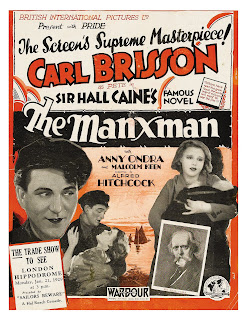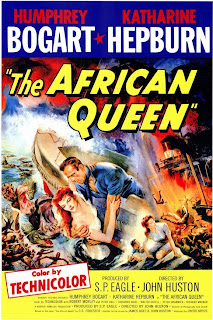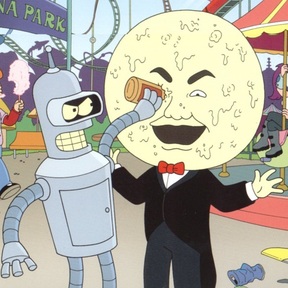The Manxman (1929)

Often the way we watch a film can shape our opinion of it. If you watch a hugely epic, powerful film like Lawrence of Arabia serialised half-an-hour at a time over a week, it will lose a lot of its impact as it's not meant to be digested in that way. To experience a film the way the director would prefer, you would usually need to watch it in a busy cinema where the collection of people will add to the atmosphere in a way that you could never recreate at home, despite large flat-screen TVs and Blu-rays allowing most people to come far closer to a true 'home cinema' than they've ever been able to before. You're also free of distractions in the cinema (apart from the crunching of popcorn or a turf war with the stranger to your left over who has the right to use the armrest) - nowadays it's too easy to get distracted in quieter parts of a film due to the ubiquity of smartphones, Twitter, Facebook etc. And don't even get me started on watching films on your iPhone.
So, when I found myself on Friday 19th October 2012 walking up the red carpet at the Empire, Leicester Square to watch the brand new long-awaited restoration premier of Hitchcock's 1929 silent film The Manxman, I was sold on the film before I'd seen a single frame. It's not often that 80-odd year old films drum up such a reception, and with accompaniment from a small orchestra led by Stephen Horne, and the jaw-dropping frame-by-frame restoration, it really was an amazing experience.
But what of the film itself? The Manxman has to be one of Hitchcock's least-seen films. It was the final fully-silent film that he made (Blackmail, made the same year, was begun as a silent but he decided to shoot it concurrently in sound also), and it's fair to say, feels less like a Hitchcock film than many of his other efforts of the same period. There is, however, still a lot to like here, and it is certainly undeserving of its mediocre reputation.
The most beautiful cinematography of the film is around this period, with a particularly memorable shot Kate running around the cliffs. Though set entirely on the Isle of Man, Hitchcock made the film in the small fishing village of Polperro in Cornwall (a village that happily appears to have changed hardly at all in the intervening years). Another telling Hitchcock moment is as Kate and Philip's relationship progresses, as she flicks through the pages of her diary, referring to Philip first as 'Mr. Christian', then scored through and amended to 'Philip', before eventually progressing to the informal 'Phil'. Though such memorable shots are rare, they are very well done.
The story takes a turn when it emerges that Pete isn't dead at all - he's on that ship just on the horizon, and coming closer and closer to ruining Kate and Pete's happiness. Kate's father warns her that she must now marry Pete, so she and Philip hide their relationship from him as Kate duly goes through with the wedding. even having a child with him. Kate soon tries to leave Pete, but as Philip is now on his way to becoming a successful Deemster (a Manx judge), he refuses her. Defeated, Kate tells Pete that the child is not his, though he still refuses to hand it over, and she throws herself into the harbour, attempting suicide. As she survives, she is taken to court for breaking the law, and it is Philip who is acting as Deemster. Kate's father then realises that Philip is the other man she has been seeing, and reveals this to the court. Philip loses his job, and he and Kate are ostracised by the community. The final shot mirrors the first, with the boats leaving the harbour.
Though it's undeniably slow in places, the biggest problem is really with the story in that from the moment that Pete returns from the dead, it is very predictable. That said, like a number of silent Hitchcocks, this film seems to get better the more you think about it. There are a very large number of first-person shots, with the actor looking directly down the barrel of the camera, which is unsettling at first but never becomes distracting. The main three actors are all solid enough, and Kate is mesmerising in the early scenes.
So it seems then that even Hitchcock at his least compelling is still far more compelling than any other silent film director working in Britain at the time, and though I'd never suggest this to someone as an introduction to silent Hitchcock (go straight to the fantastic The Lodger for that one), it's definitely far better than most reviewers seem to suggest. Hopefully this fantastic new restoration can be the catalyst to begin a reappraisal of The Manxman - indeed judging by the reactions of the audience of that packed Empire, that reappraisal may already be underway.
So, when I found myself on Friday 19th October 2012 walking up the red carpet at the Empire, Leicester Square to watch the brand new long-awaited restoration premier of Hitchcock's 1929 silent film The Manxman, I was sold on the film before I'd seen a single frame. It's not often that 80-odd year old films drum up such a reception, and with accompaniment from a small orchestra led by Stephen Horne, and the jaw-dropping frame-by-frame restoration, it really was an amazing experience.
But what of the film itself? The Manxman has to be one of Hitchcock's least-seen films. It was the final fully-silent film that he made (Blackmail, made the same year, was begun as a silent but he decided to shoot it concurrently in sound also), and it's fair to say, feels less like a Hitchcock film than many of his other efforts of the same period. There is, however, still a lot to like here, and it is certainly undeserving of its mediocre reputation.
The story was based on a 1896 novel by Hall Caine, and over the years following its publication it quickly became a very popular book in Britain. By 1929 the creatively-named British International Pictures Ltd. believed that the novel would be a good choice to make a cinema adaption of, and the 30-year old Alfred Hitchcock was duly appointed as director. I can't help but think that this wasn't really a film that Hitchcock had much passion for, as almost uniquely among his films of this period, there is very little of his trademark suspense in the story and it comes across as more of a contractual obligation that a creative willingness to make the film.
The story is a slight twist on the love-triangle theme that was terribly popular at the time, with Carl Brisson playing the main role of Pete. Brisson had worked for Hitchcock two years previously in The Ring (another
film centered around a love-triangle), and the films begins with his character trying to woo Kate, played by Anny Ondra. Kate's father refuses to let Pete marry his daughter as he is only a lowly fisherman whom he considers to have very poor prospects. Pete vows to set sail and earn his fortune in foreign lands before returning and winning his bride. Whilst he is away, Pete asks his childhood friend Philip, played by Malcolm Keen (the detective in The Lodger), to look after Kate until he returns. Whilst Pete is away, Philip and Kate fall in love with each other, and when they receive news that Pete has died on his trip, they begin to merrily plan their lives together.The most beautiful cinematography of the film is around this period, with a particularly memorable shot Kate running around the cliffs. Though set entirely on the Isle of Man, Hitchcock made the film in the small fishing village of Polperro in Cornwall (a village that happily appears to have changed hardly at all in the intervening years). Another telling Hitchcock moment is as Kate and Philip's relationship progresses, as she flicks through the pages of her diary, referring to Philip first as 'Mr. Christian', then scored through and amended to 'Philip', before eventually progressing to the informal 'Phil'. Though such memorable shots are rare, they are very well done.
The story takes a turn when it emerges that Pete isn't dead at all - he's on that ship just on the horizon, and coming closer and closer to ruining Kate and Pete's happiness. Kate's father warns her that she must now marry Pete, so she and Philip hide their relationship from him as Kate duly goes through with the wedding. even having a child with him. Kate soon tries to leave Pete, but as Philip is now on his way to becoming a successful Deemster (a Manx judge), he refuses her. Defeated, Kate tells Pete that the child is not his, though he still refuses to hand it over, and she throws herself into the harbour, attempting suicide. As she survives, she is taken to court for breaking the law, and it is Philip who is acting as Deemster. Kate's father then realises that Philip is the other man she has been seeing, and reveals this to the court. Philip loses his job, and he and Kate are ostracised by the community. The final shot mirrors the first, with the boats leaving the harbour.
Though it's undeniably slow in places, the biggest problem is really with the story in that from the moment that Pete returns from the dead, it is very predictable. That said, like a number of silent Hitchcocks, this film seems to get better the more you think about it. There are a very large number of first-person shots, with the actor looking directly down the barrel of the camera, which is unsettling at first but never becomes distracting. The main three actors are all solid enough, and Kate is mesmerising in the early scenes.
So it seems then that even Hitchcock at his least compelling is still far more compelling than any other silent film director working in Britain at the time, and though I'd never suggest this to someone as an introduction to silent Hitchcock (go straight to the fantastic The Lodger for that one), it's definitely far better than most reviewers seem to suggest. Hopefully this fantastic new restoration can be the catalyst to begin a reappraisal of The Manxman - indeed judging by the reactions of the audience of that packed Empire, that reappraisal may already be underway.





Comments
Post a Comment